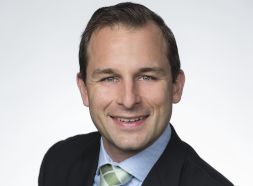Invest
I’m ten years from retirement, what should I do with my savings?
When you’re on the home stretch to retirement, growing your nest egg is of the utmost importance. With just a decade left of your working life, here’s what to do and what to avoid.
I’m ten years from retirement, what should I do with my savings?
When you’re on the home stretch to retirement, growing your nest egg is of the utmost importance. With just a decade left of your working life, here’s what to do and what to avoid.

Consider using equity in your own home to fund SMSF investing. Best to be neutrally or positively geared in case of redundancy, injury or illness that reduces capacity to work
The average superannuation balance for Australians aged 45-54 is $151,500 for males and $90,800 for females. Australians aged 55-64 have an average balance of $322,000 for males and $180,000 for females. That really is not much.
I call the last 10 years of working life the “home run” decade. It is the last chance you have to properly set up a plan to maximise the capital you have to support an income stream in retirement. The biggest problem I come across with some new clients is they only start to get serious about in saving for retirement about three years before they plan to retire. This is too late to start planning. At three years out, it’s about accepting your fate and settling with the fact that you may not achieve anything near what you expected you would have.
There is plenty of material about maximising concessional contributions and non-concessional contributions as a plan for retirement. Yes, this is a basic strategy and it works. With recent federal budget changes, the days of transition-to-retirement pensions are pretty much gone.

What can you do as well as the basics mentioned above that are already widely published?
Look at the equity in your home. For many Australians aged 50-55, their children are now beginning to be financially independent. There is a transition happening between household expenses lowering and savings increasing. Plus, there is now substantial equity in the home.
Many would naturally think about using this equity to buy assets such as shares and property in their own name. However, this means that you have assets that have their income and capital growth taxed at your marginal tax rate.
Here is an idea for consideration: Consider moderate gearing levels.
The ATO in their Practical Compliance Guidelines 2016/5 published in April, set out very clearly how people can lend money to their self-managed superannuation fund.
What this means is a couple or individual can access some of the equity in their home via a line of credit. They can then lend this money to their own self-managed superannuation fund. This is called a ‘member loan’ or the fancy technical name is a Limited Recourse Borrowing Arrangement (LRBA). The great aspect of this ATO guideline is it tells us what level of gearing one can have inside super for buying property – 70 per cent Loan to Value Ratio (LVR) or shares 50 per cent LVR. It tells what interest rate must be charged to the superannuation fund, the term of the loan and that a mortgage needs to be registered over the property. The guidelines make it very clear how to structure a member loan or LRBA to be compliant in the eyes of the ATO.
The benefit of this strategy is the assets are now owned in a concessionally taxed environment. As current legislation stands, once the asset is sold when the superannuation fund members are retired and drawing a pension there is no capital gains tax. The loan can be paid out at any time.
In principle, if you have a property purchase or share portfolio that have loan-to-value ratio of between 30 per cent to 40 per cent, the rental income or dividend income will generally be sufficient to cover the interest costs of the loan. Thus, your asset is neutrally or positively geared.
This is a smart strategy to ensure any borrowings are neutrally geared in the event of redundancy, injury or illness that reduces one’s capacity to work. If the asset pays for itself there is no drain on cash flow if income is reduced or lost and it gives ample time to decide if it is appropriate to sell the asset.
Finally, if you are in your home run decade, beware of putting yourself into debt up to your eyeballs. If you are made redundant or fall ill and cannot work, you may have problems to consider.
Andrew Zbik, senior financial planner, Omniwealth
About the author

About the author


Spending
Moneysmart study reveals Gen Z women more concerned about finances than men
A new research conducted by ASIC’s Moneysmart has unveiled the heightened levels of stress and concern regarding finances and the cost of living among Australian Gen Z women compared to their male ...Read more

Spending
The cost of politeness: Aussies out of pocket by $1,350 due to 'awkward tax'
It's the time of year when Australians dive into their pockets for festive events and gatherings, yet a recent study by PayPal suggests that many are too polite, or perhaps too embarrassed, to ask for ...Read more

Spending
Aussies can ‘NAB Now Pay Later’ with the last major bank to embrace BNPL
NAB has become the latest bank to enter the BNPL market. Read more

Spending
Aussie households spent $368 a week on transport after petrol price surge
Fuel costs have increased by 40 per cent over the past year, a new report from the Australian Automobile Association has revealed. Read more

Spending
Voters say reducing the cost of living should be the government’s top priority
Aussies have ranked high cost of living as the top issue that needs to be addressed by the next government. Read more

Spending
Bodies back Labor’s commitment to stronger BNPL regulation
All parties should commit to stronger regulations for the BNPL sector, according to Financial Counselling Australia. Read more

Spending
Household spending surges led by retail and recreation
Spending on retail, recreation and hospitality have continued to climb as COVID-19 case numbers and restrictions have eased. Read more

Spending
Banks extend financial assistance to flood-affected customers
A range of assistance is available from major banks to those impacted by flooding in NSW and Queensland. Read more

Spending
Moneysmart study reveals Gen Z women more concerned about finances than men
A new research conducted by ASIC’s Moneysmart has unveiled the heightened levels of stress and concern regarding finances and the cost of living among Australian Gen Z women compared to their male ...Read more

Spending
The cost of politeness: Aussies out of pocket by $1,350 due to 'awkward tax'
It's the time of year when Australians dive into their pockets for festive events and gatherings, yet a recent study by PayPal suggests that many are too polite, or perhaps too embarrassed, to ask for ...Read more

Spending
Aussies can ‘NAB Now Pay Later’ with the last major bank to embrace BNPL
NAB has become the latest bank to enter the BNPL market. Read more

Spending
Aussie households spent $368 a week on transport after petrol price surge
Fuel costs have increased by 40 per cent over the past year, a new report from the Australian Automobile Association has revealed. Read more

Spending
Voters say reducing the cost of living should be the government’s top priority
Aussies have ranked high cost of living as the top issue that needs to be addressed by the next government. Read more

Spending
Bodies back Labor’s commitment to stronger BNPL regulation
All parties should commit to stronger regulations for the BNPL sector, according to Financial Counselling Australia. Read more

Spending
Household spending surges led by retail and recreation
Spending on retail, recreation and hospitality have continued to climb as COVID-19 case numbers and restrictions have eased. Read more

Spending
Banks extend financial assistance to flood-affected customers
A range of assistance is available from major banks to those impacted by flooding in NSW and Queensland. Read more









